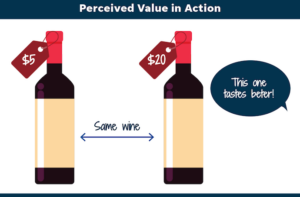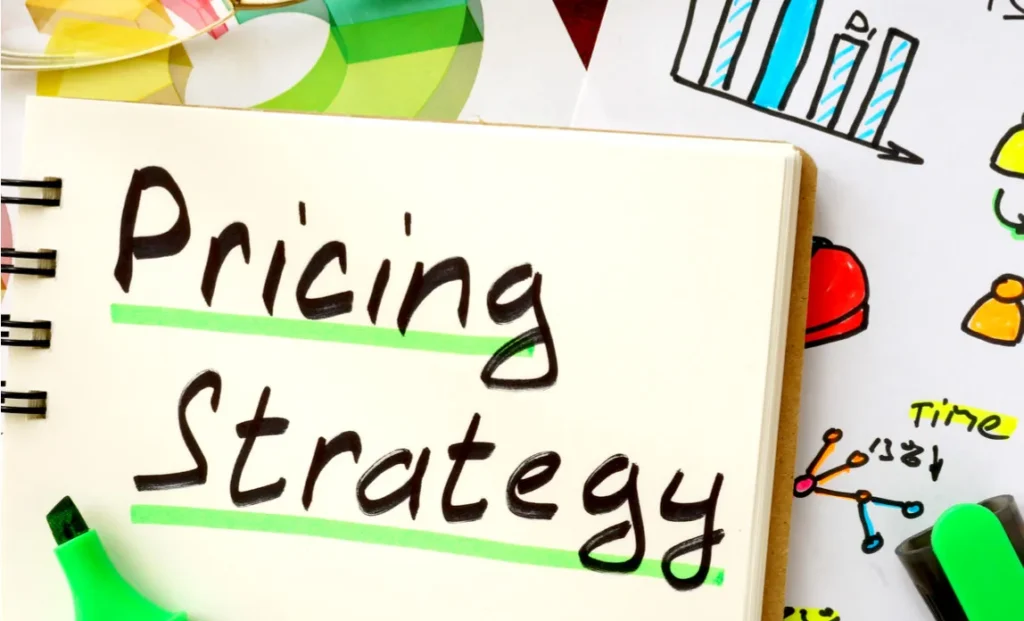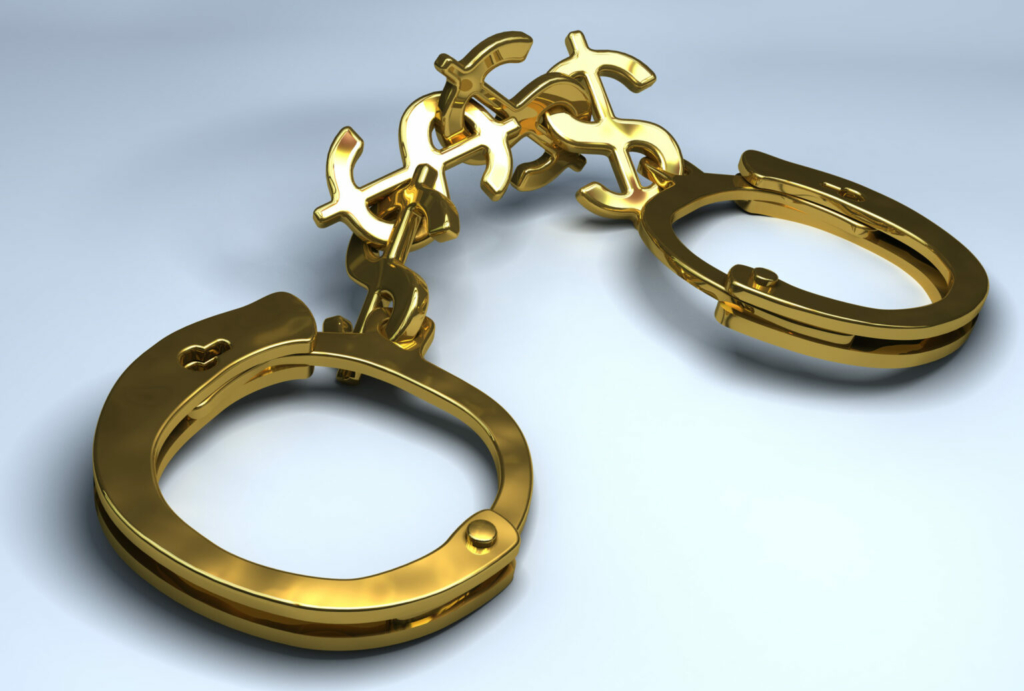General Business Strategy
Pricing strategies in marketing; you’re sending a signal, whether you mean to or not
Pricing says more than you might think. It’s about more than dollars, costs and margins.
It also tells a story.
A story that starts with what you the seller think about what you sell. “We sell high-end products to the top of the market / we compete on price and value / we’re a budget-level disruptor”.
But have you considered what your pricing tells the prospect and the story that comes to life in the mind of your potential customer?
Because people form all sorts of assumptions and associations about you just from your pricing.
Pricing is like a map. Buyers choose their territory according to their own values – such as status desire, appetite for quality and value-orientation – as well as where your price sits relative to your competitors (and all sorts of other things they might want to use their money for!).
Despite being incredibly important, a wholistic view of pricing is rarely considered by most business owners. So let’s unpack it …
Balancing price, demand and not losing customers
Scarcity and demand influence the price of just about everything.
When there was flooding in Queensland, the price of bananas went through the roof and when you’re the only mechanic in town, you can charge whatever you like!
But at some point, you charge so much that people start buying oranges instead or just drive to the next town for a more reasonably priced service.
One of the fundamentals of pricing is finding that optimal point where you’re charging as much as you can without losing your target customer.
The key words above are “… without losing your target customer”. Who they are and what they value are key factors in setting that optimal point.
And this is where we go beyond the economics of supply and demand and begin to consider the human factor and how that plays out in the magical power of brand to influence both demand and price… as well as price influencing brand perceptions. Because humans, damn them, are tricky beasts!

The role of brand in your pricing
Why are people happy to pay $500 for a white T-Shirt from Chanel, but only $50 for the same thing from H&M? Do they function differently? Does the Chanel T-Shirt cost that much more to produce? Is it that much better made?
Of course not, in fact there’s every chance they’re both made from the same cotton, perhaps in the same factory. What you’re paying for, then, is the brand, the label, the fact that you can say it’s a Chanel T-Shirt, and that makes you feel good about yourself, that it fits your values.
And that’s where the power of psychology, and perception (aka brand) collides with pricing strategy.
Brand helps create perceived value, allowing you to charge what you want (be that more… or less!)
A highly desirable brand stimulates demand (and perhaps communicates scarcity as well), and people are prepared to pay more to be associated with it.
This works across the board, in all industries, in B2C and B2B too.
An architect with a beautiful office in a great location and a slick website, for example, could charge more than one with a grubby office in the dodgy end of town, and a home-made website.
The service and quality may actually be pretty similar, but you’re happy to pay more for the architect with the professional brand, because you ‘feel’ like you’ll receive a better service, you trust them, and you also feel as if you deserve ‘a good architect’.
The brand tells the story of a superior service, and the price reinforces it, lifting your expectations of what will happen when you make the purchase. But it’s also telling a story about how you feel about yourself, and what kind of life you lead and what you deserve in your life.
If the grubby architect asked for high prices you’d walk away, even if you could afford it. You’re the wrong customer for them. Similarly, if the up-market architect surprised you by being dirt cheap, you’d be suspicious – “too good to be true” springs to mind… “What haven’t they included, what extra will I end up paying”?
This is not to say the grubby architect is necessarily making a mistake. Charging the lowest possible price sounds ridiculous on the face of it but is also a very valid strategy.
Consider these scenarios: you’re going for high-volume sales and need a keen price to get the numbers you need to turn a profit. Or you see an opportunity to target a low-price buyer that other brands don’t serve well. You found a way to operate with a lower cost structure (that’s the story of ecommerce). Maybe you want to shake up a marketplace and force a weak competitor out.
All valid, though ‘low cost’ pricing strategies work particularly well for commodity services or products where price is the major deciding factor.
Take Chemist Warehouse, for example, where you might pick up a tube of Colgate for half the price you’d pay in your local pharmacy. Toothpaste is toothpaste, so you don’t really care where you buy it from, you’re happy with whoever sells it cheapest. And who might that be…?
From the name of the business to the style of its ads, everything at Chemist Warehouse clearly crafts the brand as a no-frills place where you’ll get bargain basement deals. The logo is ugly, the positioning statement says, ‘Stop Paying Too Much!’ and when you get into the store, it’s all been designed, very carefully, to look as if it hasn’t been designed very carefully at all! And it’s extremely successful. JB HiFi does the same thing in a different market, and is also highly effective.
The price, the target customer and the brand must all work in concert.
Of course, there are plenty of shoppers who would simply rather not shop in that sort of environment, and that’s fine with Chemist Warehouse – they know their target market, they leave the others to David Jones and co.. Where the customer is reassured not just by a very different environment but also by higher prices
That’s the power of a clear pricing strategy, target market and brand that are in perfect unison.
In B2B of course, there’s no store to communicate your positioning, so you have to rely on marketing to ensure your perceived market reputation, quality and trustworthiness all say what you want them to about the value you offer and the prices you charge.
Balancing price and perceived value
Purchasing decisions are always made with a good dose of emotion, even in a B2B situation. Even if the price is a bit of a stretch, it says ‘we value ourselves because we’re good’ – and if the brand delivers that sense, then the buyer will do the rest of the work for you… “We want the best, right”? Decision made.
The key, really, is to determine where you want your offering to sit in the market you’re targeting; high-end and high touch, low-end transactional, or somewhere in between. And once you’ve determined a pricing strategy, ensure your marketing strategy and brand align with and deliver it.
None of these elements exist in isolation and should always be considered as a whole if you’re thinking about changing your prices.
But if you find yourself talking to a marketing person that doesn’t talk about pricing, or a salesperson that doesn’t get the brand, be aware you’re not getting the full picture. (By the way, we wrote about sales and marketing alignments here).
So what do you think? Have you really thought about your pricing in these broad terms? What story is your pricing telling about the quality, and value of your product or service? Is it the same story your brand is telling and is it in line with the story your prospects are telling themselves ?
And are you getting all then angles on this from your sales and marketing people as well as your finance people?
If you think something is a little off, then we’d be happy to chat about it.




